Thoughts of baking sweet potatoes probably don’t occur to you before it’s time to mass-produce pies for the too many Thanksgiving dinners that you somehow agreed to attend. But, maybe, that’s because you haven’t considered cooking sweet potatoes in months that don’t involve embarrassing holiday sweater. I think we should change that.
In the late summer months, before the inevitable chill and the pseudo survivalist desire for heartier fare, an abundance of potato varietals begin to crowd the bins of local farmers markets, slowly replacing the fruits, delicate greens, and speckled beans of early summer.
For a truly satisfying vegetable spread, incorporating starchy elements like sweet potatoes will quiet the growl of even the most skeptical of carnivorous partygoers. And, the sweet potato pairs perfectly with the setting summer’s fleeting offerings: the last and juiciest of heirloom tomatoes, unusual squashes that grow long across the summer soil, sweet and spicy peppers in shades of red, orange and yellow, and corn that begs to be scorched on the grill. Break out the rooftop grill, one more time (or, if you’re super is on site, there’s always the McGuyvered hotplate-turned-grill pan-option).
For any preparation, the key to getting the most out of this inherently sweet and savory potato is to bake it. Baking a sweet potato releases the sugars that define the flavor of this candy of the earth and make it such a unique ingredient in a variety of applications.
Be inspired by the produce that is soon to make its gypsy-fade, and concoct a summer vegetable ragu. Or, use sweet potatoes as a creative compliment to summer’s protein of choice: seafood. Incorporating the complexly flavored potatoes in a light seafood stew, perfect for the cooler nights of August, adds a aromatic element that enhances the natural sweetness of fish and summer crustaceans.
Two methods of baking allow you to monitor how sweet your potato will turn out to be. If you bake the potato in foil, you essentially trap all the moisture and sugar, ensuring your potato is at its most saccharine. And, the flavorful juices coat the potato’s skin, which can be eaten on its own or incorporated into a dish. But, if you want to tame the sweetness of the potato, and you’re planning on discarding the skin, skip the foil and let the oven and the potato do their thing.
Here’s some simple ways to bake a sweet potato.
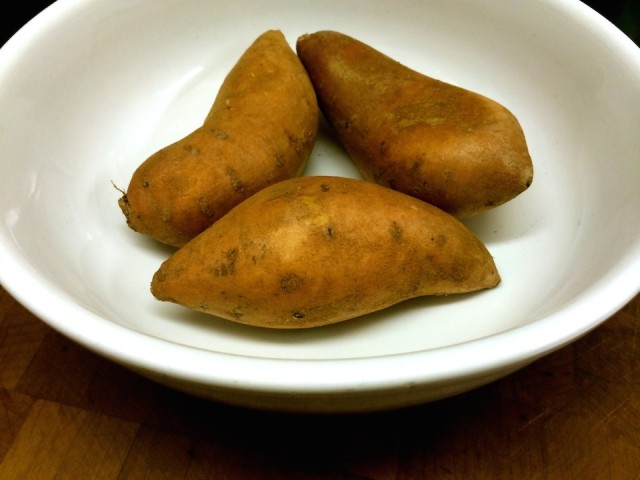
You will also need:
1. Preheat the oven to 350 degrees. Then, thoroughly wash your potato, especially if you plan on eating the skin. To thoroughly clean the skin, use a paper towel to wipe off any remaining dirt and water.
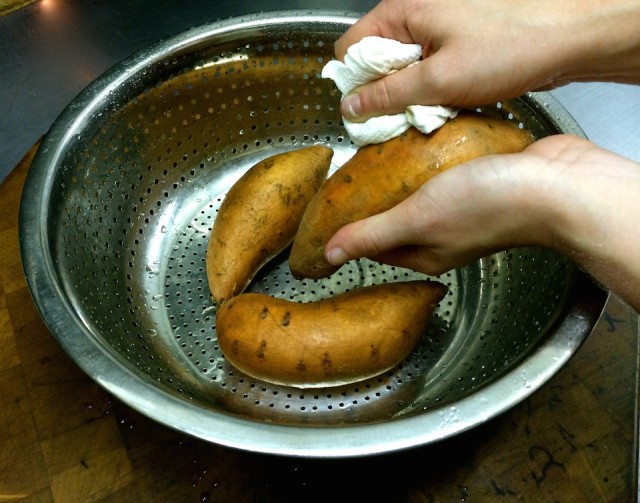
2. Season the potato on all sides with the oil, salt and pepper. If you’re using the foil method, partially wrap the potato and season it in the foil, to maximize the end flavor.
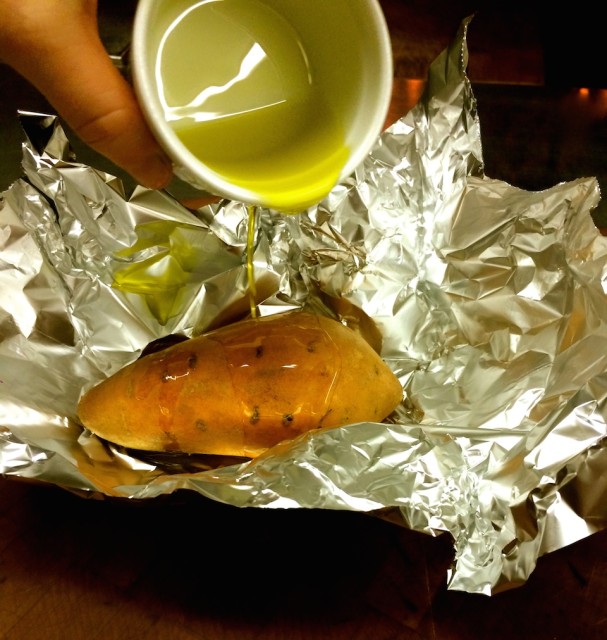
3. Wrap up the foil to create a sealed pouch around the potato.
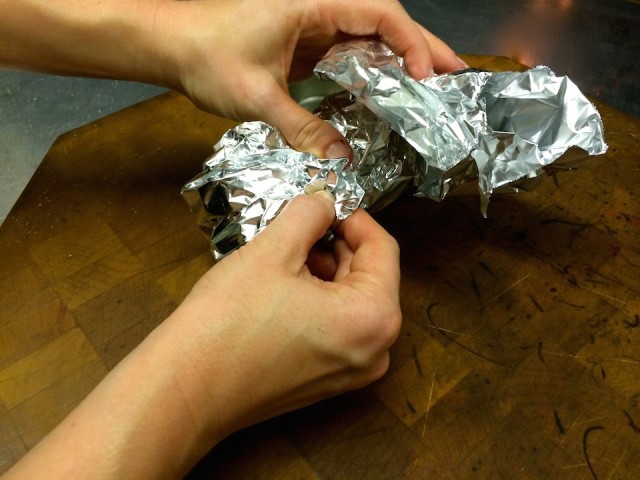
4. Place the potato on a sizzle plate or small sheet pan and put it the oven to bake for 30-40 minutes.
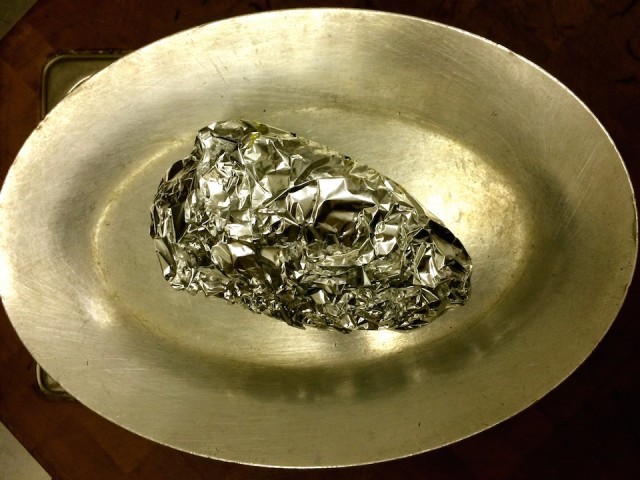
5. Rotate the potato half way through baking, to avoid burning the skin and ensure the potato is evenly cooked through.
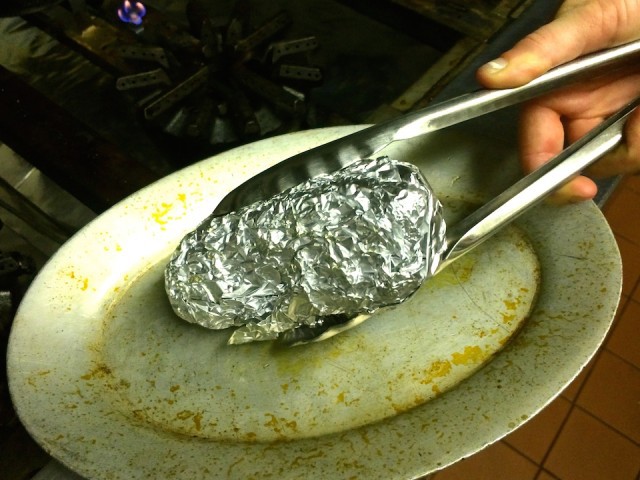
5. After 30-40 minutes, test the potato’s doneness by poking through the skin with a knife. The cooking time will depend on the size of the potato. If the knife slides through the potato without resistance, it’s finished. Keep in mind that even outside of the oven a hot item continues to cook itself, unless it’s immediately chilled.
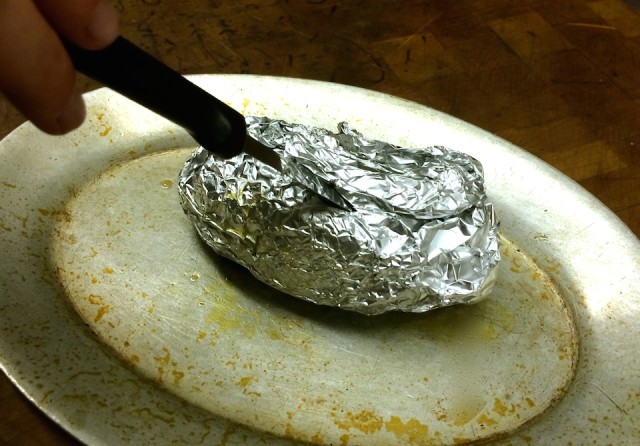
6. Remove the potato from the oven. Allow it to cool for a few minutes. If wrapped in foil, you can speed up the potato’s cooling process by opening the foil encasing or removing it completely.
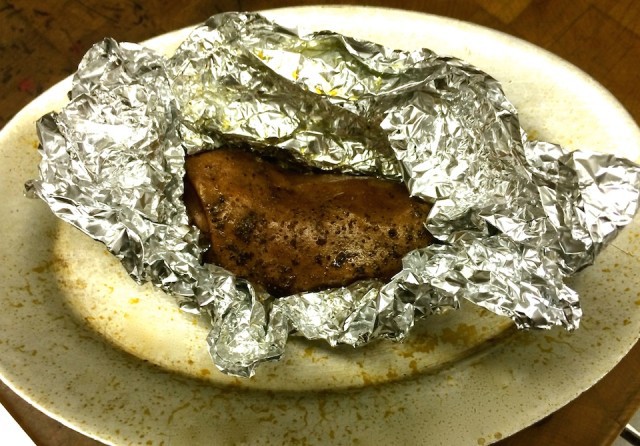
7. After a few minutes, the potato is ready to eat, and makes a great accompaniment or meal all on its own. But, if you’re planning on using the potato for further preparation, make sure to watch your cooling time. Unless you are cooking a cold dish, like potato salad, ensure that the the sweet flesh stays warm, because it is more easily manipulated before it cools. To check that the flesh is still warm, poke through the skin to the middle of the potato and hold the flat side of the blade to the outside of your lip. If the blade is hot, so are the potato’s insides.
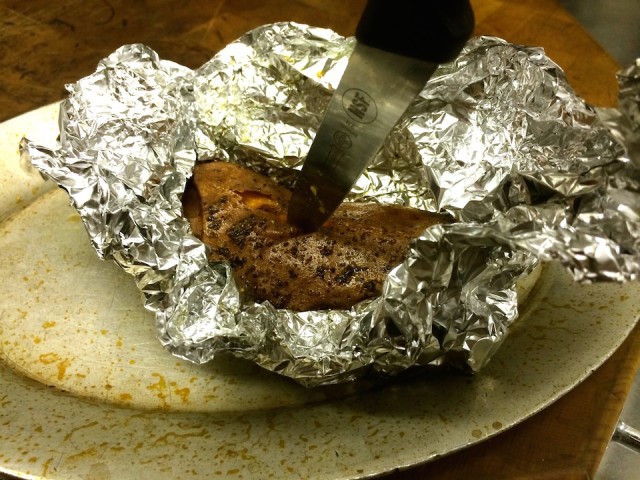
8. For most preparations, remove the skin from the outside of the potato. You can always use paper towels to help remove the skin, if the outside is still too hot to touch with your fingers. Hold the potato with a towel in one hand and puncture and peel off the skin with a towel, in the other.
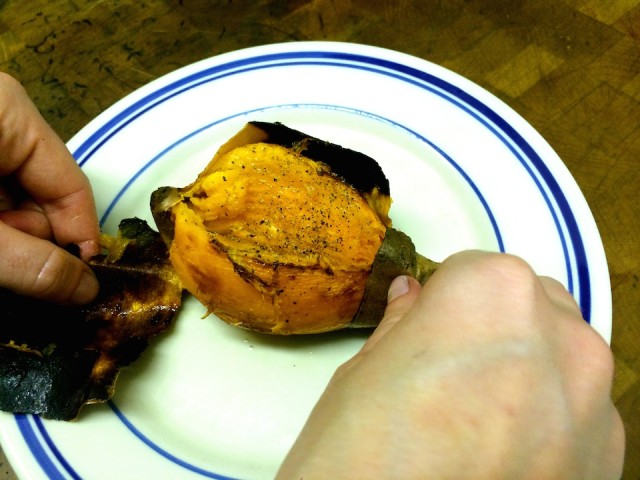
9. The skin should tear away easily from the surface. Then, you can either discard the skins. Or, for an amazing mid-cooking snack, season and re-bake them for a few minutes to create homemade potato skins.
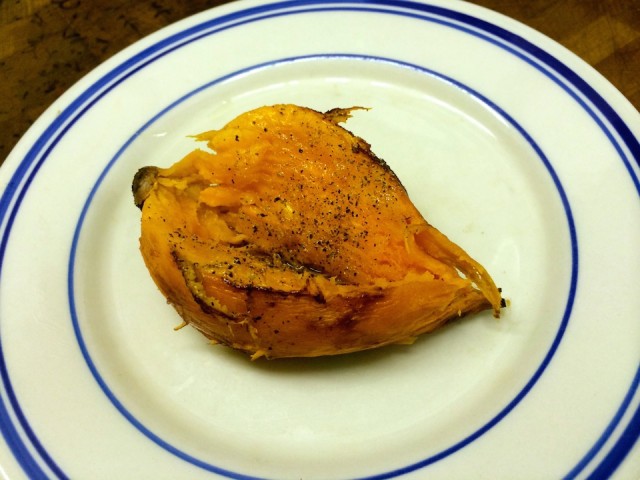
Be sure to also look out for the petite sweet potatoes, that are a specialty right now at the farmers market. They are harvested while the potatoes are small, retaining the compact flavor of a young vegetable. And, they can be used to for a unique spin in preparations that call for fingerling potatoes.
David is the resident nerd around these parts. Running a popular tech blog (TheUnlockr.com) for the past 6 years, he’s taken his over-analytical mind and made the transition to food.